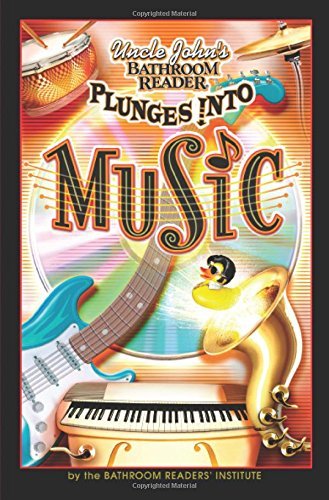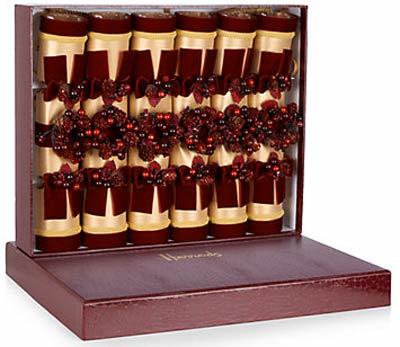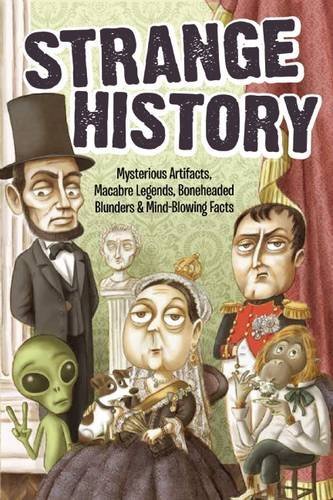Bathroom Readers' Institute's Blog, page 69
December 27, 2016
Myth-Leading: Common Names
We might assume that the common names we have for things are accurate descriptions of them, but that’s not always true.
Birthday Party
You can only have one birth day—the day you were born. After that, every time you celebrate your birthday you’re really throwing an anniversary party.
Killer Whale
They’re neither killers nor whales. They were once thought to be man-eaters. The 1973 U.S. Navy diving manual even warns that killer whales “will attack human beings at every opportunity.” But they were wrong—there are very few documented cases of attacks on human. (Seals and penguins are a different story.) And they’re members of the dolphin, not the whale, family.
Wild Rice
It’s neither wild, nor rice. Officially known as Zizania aquatica, this once-wild grass seed is now cultivated by farmers worldwide.
Radiator
Whether it’s in your home or in your car, radiators work by convecting heat—moving it via a liquid or gas, not by radiating. The radiator in your home heats the air currents around it until enough is heated to make the room feel warm. The one in your car transfers heat from the engine to water, which passes it to the atmosphere. The “radiators” radiate a little, but not much.
Poison Ivy
It’s not a poison, it’s an allergen. Poisons are harmful to everybody; allergens only affect some people. Poison ivy can cause severe itching and swelling, but many people aren’t even affected by it. It’s not ivy, either—it’s a member of the sumac family.
Ringworm
This infection makes “ring-like” marks on skin—but there are no worms involved. It’s caused by a fungus.
Heavy Cream
When milk producers say “heavy,” they actually mean “full of fat,” and the fat is the lightest part of the milk. That means that “heavy cream,” which contains as much as 30% milk fat, is actually a lot lighter than skim milk, which contains only trace amounts of fat.
The post appeared first on Trivia Books and Facts | Uncle John's Bathroom Reader.
“Star Wars” and Sharp Wit: R.I.P., Carrie Fisher
Fisher, the star of Star Wars and prolific writer, recently passed away at the age of 60. As a playwright, screenwriter, and memoirist, she was outspoken about her years in Hollywood…and often in a brutally funny way.
The Star Wars Holiday Special is legendarily bad, but Fisher embraced that fact. The special, cheaply produced and farmed out to awards show writers by Star Wars mastermind George Lucas, it aired just once in 1978 and it’s only available as a bootleg. Lucas gave Fisher a copy of the special as a gift after she recorded the DVD commentary for the original Stars Wars. She claimed that she would play it at parties…when she was ready for her guests to clear out and go home.
At the end of the special, Fisher makes a cameo appearance as Princess Leia. Fisher demanded that she get to sing a song in the show, and she was allowed. Set to the melody of the familiar Star Wars orchestral score, Fisher sings a song about “Life Day,” the Star Wars world’s version of Christmas. Of the special, Fisher said in 2015, “It was awful. And I don’t mean awful in a good way.”
In 2012, an eagle-eyed Star Wars fan was watching Return of the Jedi and noticed that Fisher-as-Leia had one fingernail that was noticeably longer than her other ones. Fisher. The fan posited on the internet that Fisher, who has been candid about her past drug use, particularly while filming the Star Wars movies, was using it to snort cocaine. Fisher denied it on Twitter, saying that she “used dollars or tiny spoons like any other respectable former drug addict.”
Fisher returned to the most famous role of her career, Princess Leia, in 2015’s Star Wars: The Force Awakens. Fisher says the film’s production pressured her to lose weight. She made light of it in an interview with Good Housekeeping, saying, “They don’t want to hire all of me. Only about three-quarters.”
In 2015, a rumor spread that Star Wars owner Disney would no longer allow the manufacture or sale of merchandise depicting Fisher’s Princess Leia in her “Slave Leia” costume—a scant bikini the character was forced to wear when she was held captive by Jabba the Hutt in Return of the Jedi. When asked if she sided with parents who wanted the ban upheld because the outfit was objectifying, Fisher told a reporter, “A giant slug captured me and forced me to wear that stupid outfit, and then I killed him because I didn’t like it. And then I took it off. Backstage.”
The post “Star Wars” and Sharp Wit: R.I.P., Carrie Fisher appeared first on Trivia Books and Facts | Uncle John's Bathroom Reader.
From the Olympics to the Multiplex

What does an athlete do after the Olympics are over? They become movie stars…or at least try.
Kurt Thomas…
competed in gymnastics, a sport for which the Olympics are the epitome. After winning multiple medals at the World Championships in 1978 and 1979, Thomas was primed for Olympic gold…but didn’t get the chance. The U.S. boycotted the 1980 Summer Olympics because they were being held in Moscow. To wait for the 1984 Olympics would’ve put Thomas at age 28—a bit too old for a gymnast. So, he went into acting instead. He starred in the 1985 Cold War action movie Gymkata. A classic “bad movie,” Thomas plays Jonathan Cabot, an athlete sent by the American government to compete in an Eastern European nation’s bloodsport called “The Game.” If he wins, the U.S. can put a satellite monitoring system in the country. (Thomas wins, as all of the trees and rocks he has to onto and off of to escape bad guys look an awful lot like gymnastics equipment.) Along with Gymkata, Thomas also starred on the 1985-87 soap opera True Confessions.
Bruce Jenner…
In 1976, Bruce Jenner (now Caitlyn Jenner) won the decathlon in the Summer Olympics, and became an overnight superstar. Jenner fielded all kinds of offers in the world of entertainment, ultimately becoming a cast member on CHiPs and co-starring in the Village People’s musical Can’t Stop the Music. That movie was such a flop that inspired the “Golden Raspberry Awards,” (or Razzies), the Oscars of bad movies. But Jenner just made some bad choices: The Olympian had at once point been offered the lead in Superman.
Johnny Weismuller…
is probably better known for his film career than he is for the athletic success that led to his film career. Weismuller played the iconic role of Tarzan in 12 movies in the 1930s and 1940s. But in the decade before that, he was among the fastest and most accomplished swimmers on earth. He won more than 50 events at the U.S. National Championships, as well as five Olympic gold medals in swimming…and a bronze one as a member of the U.S. water polo team.
The post From the Olympics to the Multiplex appeared first on Trivia Books and Facts | Uncle John's Bathroom Reader.
December 26, 2016
R.I.P. George Michael
The former Wham! frontman made a complete career 180 when he left the pop group for a solo career that was more soul and R&B than it was teenybopper. Michael died over Christmas at the age of 53. Here’s a look back at some notable songs and moments from his 35-year career.
Michael’s first solo single after the dissolution of Wham! was the soulful, risqué “I Want Your Sex.” Far from the bubblegum pop of Wham!, it was so frank in its discussion of sexuality that BBC Radio would only play it after 9 p.m., while many American radio stations didn’t play it all. But maybe there’s no such thing as bad publicity: “I Want Your Sex went to #3 on the British pop chart and #2 on the American pop chart.
Michael first began writing the Wham! hit “Careless Whisper” in 1981, when he was just 17 years old. His Wham! cohort Andrew Ridgeley contributed over the next three years, and when it was released in 1984, it became the biggest hit Wham! would ever have, hitting #1 in the U.S., U.K., Canada, South Africa, Switzerland, Ireland, Italy, Japan, Australia, and the Netherlands. “Careless Whisper” wound up being the top single for the entirety of 1985 in the U.S., where it was released credited to “Wham! Featuring George Michael.” An explicit move toward a solo career for Michael, Wham! broke up not too long after.
Why is “A Different Corner” a historic song? The song from Michael’s first solo album Faith is a true solo effort. It’s the first time a singer ever hit #1 with a song that he wrote, arranged, produced, song on, and played all the instruments on.
In 1990, Michael released Listen Without Prejudice, Vol. 1. Despite selling millions of copies, there was never a Listen Without Prejudice, Vol. 2. Why? Michael’s relationship with his label, Sony, soured shorty after the release of Vol. 1. Michael had tired of the pop star life, and wouldn’t do the kinds of things Sony wanted him to do to promote the album, like appearing in music videos. He didn’t appear in the one for the first single “Praying For Time,” nor the follow-up, “Freedom ’90.”
In early 1998, Michael was arrested in a Beverly Hills park’s restroom when he tried to solicit an undercover police officer for a “lewd act.” He was forced to publicly declare that he was homosexual. But rather than embark on the usual celebrity scandal route of public apologies on talk shows, Michael made light of the event by recording the single “Outside.” He makes fun of himself and the incident, especially in the video, in which a park’s restroom magically transforms into a disco.
The post R.I.P. George Michael appeared first on Trivia Books and Facts | Uncle John's Bathroom Reader.
December 23, 2016
What Kids Around the World Leave Out for Santa Claus
Not every kid in the world leaves out milk and cookies for Santa. That makes sense, because that treat is a very American pairing. Also, it’s nice that Santa gets to try a variety of snacks on his big night. Here’s a look at what kids around the world (and their parents) leave out on Christmas Eve for the man in red.
Australia
The country is in the Southern Hemisphere, which means that December 25 smalls smack dab in the middle of summer. As a result, when Santa goes to houses in Australia, he gets a refreshing glass of lemonade. Or an ice cold bottle of beer.
Ireland
Nobody goes to Ireland without grabbing a pint of Guinness—even Santa. Irish kids leave out a glass of stout.
Argentina
Instead of leaving out goodies for Santa on Christmas Eve, kids in the South American country leave out hay and water on January 6. They’re for the horses that guided the Three Wise Men, who arrived to visit the Baby Jesus on the holiday called Epiphany. (It’s the twelfth day of Christmas.)
Chile
Fruitcake is a popular holiday treat, perhaps nowhere more so than in Chile. A fruitcake-like baked good called pan de pascua is offered up for El Viejo Pascuero, the Chilean Santa Claus.
France
The French Santa Claus (Père Noël) looks inside children’s shoes for, what else, cookies for himself and carrots for his reindeer. If kids were diligent enough to fill their shoes with treats, Père Noël will reciprocate with gifts.
Sweden
Tomte, a winter creature, is who delivers the presents in Sweden. And the one thing he needs on a long night of delivering gifts: a cup of coffee.
England
Instead of cookies, the traditional holiday treat of mince pie is what’s left for Santa by kids in Britain. And instead of milk, Santa gets a nice glass of sherry.
The Netherlands
Awaiting Sinterklass is a Dutch treat…for his horse. (Santa’s sleigh is believed to be pulled by horses, not reindeer.) If kids leave carrots, hay, and water, they’ll get treats in return, such as chocolate coins, oranges, and marzipan.
Germany
Santa must be full by the time he gets to Germany. In that country, kids leave hand-written notes.
If you enjoy this, check out this great infographic.
The post What Kids Around the World Leave Out for Santa Claus appeared first on Trivia Books and Facts | Uncle John's Bathroom Reader.
December 22, 2016
Message in a Bottle
According to the insurance company Lloyd’s of London, most messages found in bottles are fakes. These, however, are not.
Last Words
On April 11, 1912, 19-year-old Jeremiah Burke and his cousin Nora Hegarty boarded the RMS Titanic in Ireland. Two of Burke’s sisters had already immigrated to the U.S., and he and Nora were planning to join them in Boston. Before Burke left for the ship, his mother gave him a bottle of holy water for good luck. It didn’t work: neither Burke nor his cousin survived when the Titanic sank on April 15. A year later, a man found the bottle washed up on the beach at Dunkettle, not far from where the Burke family lived. Inside was a note that read, “From Titanic. Good Bye all. Burke of Glanmire, Cork.” The note remained displayed in the Burke family home for nearly 100 years; they donated it to a museum in 2011.
Mysterious Ways
“Brother” George Phillips, known as the “Whiskey Bottle Evangelist,” used bottles to preach. In April 1940, the recovering alcoholic was inspired by driftwood he saw floating along the beach. “God spoke to my heart there,” Phillips said. He started collecting old whiskey bottles from dumps, placing gospel tracts (religious pamphlets) and return address cards inside each one and putting the bottles into Puget Sound, near his home in Tacoma, Washington. Initially he placed them by hand, but by 1941 he’d enlisted sailors on outgoing ships to drop the bottles for him.
Over a period of 20 years, Phillips estimated that he’d sent out around 40,000 bottles and received 2,000 replies from 40 different countries.
Good For You!
In 1954 Guinness Exports Ltd. launched an advertising promotion called the “Bottle Drop.” Fifty thousand Guinness bottles, each with a card inside asking the finder to mail it back to Guinness to receive a reply, were dropped from ships around the world. The company received cards from England, the Bahamas, Tahiti, and Mexico, among other countries. The promotion—which included the message “Guinness is Good for You!” in red letters—was so successful that they did it again in 1959, in celebration of the company’s 200th anniversary. This time, Guinness dropped 150,000 specially made bottles into the Atlantic Ocean, each containing a scroll from “the Office of King Neptune,” a booklet with the company history, instructions on how to turn the bottle into a table lamp, and an ad for Ovaltine. Fifty years after the drop, bottles are still being found. Among the replies: “I was walking along the isolated beach south of the Mundrabilla Road House when I found your bottle. Myself and all the people of Mundrabilla (all five of them) love Guinness.” It was signed by Australian Geoff Gibson.
Built by Prisoners
In 2009 workers renovating a building near the site of the Auschwitz death camp found a bottle bricked into a wall. Inside was a penciled note dated September 20, 1944. It read “Air raid shelter for the T. W. L. personnel. Built by prisoners” and listed the names and hometowns of seven men, ending with “all age 18 to 20.” The Auschwitz-Birkenau Museum tracked down some of the men on the list and found that they had been forced to build an aircraft shelter for the Nazis. During construction, the men hurriedly wrote the note, sealed it in a bottle, and placed it inside one of the walls. Survivor Wacław Sobczak told reporters, “The Germans killed the sick and the weak. I didn’t think we’d survive. We wanted something of ourselves to remain behind, even if it was only that bottle.” Five of the seven men survived the camps. The fates of the other two are unknown.
Saved by the Bottle
The Lennie, a ship out of Bristol, England, was hijacked by its crew in 1875. The mutineers murdered the captain and the first and second mates and ordered the steward, a Belgian named Van Hoydonck, to pilot the ship to Gibraltar. Under threat of death, Van Hoydonck agreed…but secretly had the cabin boy write 24 notes, which Van Hoydonck put in 24 bottles. Then he steered the ship toward France and tossed the bottles overboard. Amazingly, the French navy found one and sent a warship to investigate. Outgunned, the mutineers surrendered and were arrested and sent to England, where they were tried for murder and hanged. As for Van Hoydonck, he opened a restaurant in England, got married, and never sailed again.
Looking for Love
While sailing on the open sea in 1955, a young Swedish man named Ake Viking addressed a message in a bottle to “Someone Beautiful and Far Away” and ended the note with, “Write me, whoever you are.” Two years later, Viking received a letter from a young Italian woman named Paolina. “I am not beautiful,” she wrote, “but it seems so miraculous that this little bottle should have traveled so far and long to reach me that I must send you an answer.” The two began a correspondence, and Viking sailed to Sicily to meet Paolina in person. He thought she was beautiful, and they were married soon after.
The post Message in a Bottle appeared first on Trivia Books and Facts | Uncle John's Bathroom Reader.
December 20, 2016
The Unique Paths of Some Past Heisman Trophy Winners
Each December, the Downtown Athletic Club awards the Heisman Trophy to the year’s top college football player. Many have gone on to huge success in the NFL, such as Cam Newton, Barry Sanders, Bo Jackson, Marcus Allen, and, uh, O.J. Simpson. Some of the other 80-odd guys to win the prize have taken a different path.
Chris Weineke
As the Heisman goes to a college player, the winner is usually about 20, 21, or 22—traditionally what we would call “college aged.” But people of any age can attend college if they pass the requirements…and they can play college football if they make the team. In 1997, Chris Weineke contacted Florida State football coach Bobby Bowden, who had recruited the quarterback in 1989, to see if he could still have a spot on the team. Bowden said yes…and in 2000, Weineke won the Heisman Trophy at age 28, the award’s oldest-ever recipient. Why did he start college so late? He spent 1990 to 1996 pursuing baseball, and made it as high as the AAA-level affiliate of the Toronto Blue Jays.
Charlie Ward
Although he won one of football’s highest honors, Ward never played professional football. He was never even drafted…by the NFL. Ward was a spectacular all-around athlete at Florida State University. Not only did he quarterback the football team to a national championship in 1993, he was a point guard who led his team to the “sweet 16” of the NCAA basketball tournament in 1992. He was also an accomplished amateur tennis player and was drafted by the Milwaukee Brewers…even though he didn’t play college baseball. Ultimately, he did go pro in basketball and played for 11 years in the NBA.
Pete Dawkins
Dawkins might be the smartest guy to ever win the Heisman. After beating a case of polio at age 11, Dawkins was a standout student athlete: all-league QB and baseball team captain. Upon graduating from Cranbrook, a prestigious, private Michigan boarding school, in 1955, he was accepted to Yale…but he enrolled in the U.S. Military Academy at West Point instead. As the halfback of the football team, he was an All-American and a Heisman Trophy winner in 1958. But that would be the last time he’d play football on a big stage. Dawkins graduated near the top of his class, and won a Rhodes Scholarship to study at Oxford, where he earned a degree in Philosophy, Politics, and Economics. Then he returned to the U.S., and got a Master’s degree and a doctorate from Princeton. Then he returned to military service, earning two Bronze Stars for Valor in the Vietnam War. He retired as a brigadier general in 1983.
Eddie George
George had his jersey number (27) retired by Ohio State University. As a junior in 1994, he rushed for 1,442 yards. In the next season, for which he won the Heisman, he rushed for 1,927 yards, an OSU record. George was subsequently drafted high in the NFL draft in 1996 and retired in 2004 after a stellar nine-year career that included four Pro Bowl selections and being named Offensive Rookie of the Year. But what’s really impressive: In 2016 he took over the role of sleazy lawyer Billy Flynn in the Broadway musical Chicago.
The post The Unique Paths of Some Past Heisman Trophy Winners appeared first on Trivia Books and Facts | Uncle John's Bathroom Reader.
December 19, 2016
Bionic Men
Part man, part machine—and all real stories of people with robot parts.

Close-up of woman’s blue eye. High Technologies in the futuristic. : contact lens
Finger
Finnish computer programmer Jerry Jalava lost his ring finger in a motorcycle accident. He replaced it with a prosthetic finger of his own design—it’s also a computer flash drive. It looks like a normal finger (a shiny plastic one), but Jalava can pull back the nail, plug it into the USB slot on his computer, and store data files. (Ironically, these drives are sometimes called “thumb drives.”)
Knee
Brad Halling served in the Army’s Special Forces during the 1993 U.S. intervention in Somalia. A grenade hit his helicopter, and Halling lost his leg in the attack. In 2007 he received the most sophisticated joint replacement ever built: the Power Knee. Connected to two prosthetic leg parts, a microprocessor in the $100,000 device receives a signal from a small transmitter strapped to Halling’s other leg. The microprocessor senses how he’s moving and directs the robotic knee’s electric motor to copy the muscle movements. In short, he can walk normally. The downsides: It makes a loud whirring noise and has to be charged every night.
Eye
Canadian filmmaker Rob Spence lost the use of his right eye in a childhood gun accident. So, inspired by the tiny camera on his cell phone, in 2009, Spence decided to make the ultimate firstperson-POV film…by installing a prosthetic eye that is also a camera. A team from the University of Toronto is building the eye-camera (or “Eyeborg,” as Spence calls it), which will record video and send it wirelessly to a computer.
Bones
Researchers in the U.S. military may have found a way to regenerate human limbs. They use a technique called nanoscaffolding, in which tiny, cell-sized nets made of fiber optics hundreds of times thinner than a human hair are attached to the end of a missing limb. This structure acts as a framework where cells can congregate and bond into bones and tissue, growing through tiny holes in the scaffolding. The procedure isn’t quite ready to try out on humans yet, but scientists believe that one day it may also be used to generate new organs.
The post Bionic Men appeared first on Trivia Books and Facts | Uncle John's Bathroom Reader.
5 Absolutely Cracking Christmas Crackers
Christmas crackers are a classic holiday tradition in the U.K., but in recent years a wide variety of the party favor have begun to show up in American stores. Not familiar? They resembled a piece of wrapped candy, but it’s a paper tube inside of fancy paper. You then pull both ends until it makes a “crack” sound and spills out the goods: a slip of paper with a bad joke, a paper crown, and a small trinket of a prize, like a rubber ball or plastic ring. They usually work out to costing about a dollar (or pound note). But not all of them.
Fancy Cracker
London’s Harrods is arguably the most famous department store in the world…and one of the most posh. Each year, the store sells its Harrods Traditional Berries Christmas Crackers. They’re so named because berries figure into the holidayish design on the crackers themselves, which are held tight with velvet ribbons. The gifts inside are things of value, such as a silver-plated magnifying glass or a wine stopper. The £100 ($125) price tag for a box of six reflects that.
Giant Chocolate Cracker
English artisan chocolatier Hotel Chocolat sells what it calls the “Rather Large Cracker.” Indeed: It’s 12 times the size of a regular cracker, because it’s got at least 12 times the amount of stuff inside. It includes 12 paper crowns, 12 jokes, and 40 holiday-flavored Hotel Chocolat chocolate bonbons, such as mulled wine truffles and “Christmas brownies.” Cost: £36, or $45.
Six-Person Cracker
High-end London department store Fortnum and Mason is offering the Sensational Six Person Super Cracker. Resembling a snowflakes, it’s six crackers combined into one. Up to six people (or three people with both hands) are all supposed to pull on the cracker’s ends at the same time. The items inside are a bit fancier than the usual cracker fare: the jokes are original, and were written by author/comedian/actor Stephen Fry. The prizes: sheet music for a Christmas song, and eight musical whistles, each tuned to a different note, with which you’re supposed to play the music. Cost: £65, or about $80.
Gin and Cracker
Crackers are mostly kid stuff, but this one is strictly for adults. The Drinks by the Dram Gin Christmas Crackers come in a pack of six, and each one contains a personal-sized bottle of a different top shelf gin from around the U.K. (It costs £40, or $50; tonic not included.)
Diamond Cracker
In 2014, an online luxury goods merchant calledoffered some of the most expensive crackers in the world. Gift-givers pick ahead of time which extremely fancy item they want inside their cracker. They could choose from a £77,500 trip around the world, for example, or a £190,000 Aston Martin. Or a yacht. Or a 20-diamond Cartier necklace.
The post 5 Absolutely Cracking Christmas Crackers appeared first on Trivia Books and Facts | Uncle John's Bathroom Reader.
December 16, 2016
Last-Minute Gift Ideas with Uncle John’s Bathroom Readers
Good news for last-minute gift-givers: our eBooks make fantastic last-minute gifts for anyone on your list! Whether you’re shopping for a fan of sports, history, the military, or nature, we’ve got an edition that’s sure to please. More good news: Uncle John’s out-of-print titles have been resurrected as eBooks. It’s the magic of the season!
If you need help figuring out how to gift an eBook on the Kindle, here are some handy-dandy instructions.
 Uncle John’s Uncanny Bathroom Reader
Uncle John’s Uncanny Bathroom ReaderWhat’s so uncanny about the 29th annual edition of Uncle John’s? This enduring series has been delivering entertainment to three generations of readers…and it’s still going strong! Covering a wide array of topics—incredible origins, forgotten history, weird news, amazing science, dumb crooks, and more—it’s 512 pages of the best stuff in print. Purchase
Strange History
From the 20th century to the Old West, from the Age of Enlightenment to the Dark Ages, from ancient cultures all the way back to the dawn of time, Strange History is overflowing with mind-blowing facts. Read about mysterious artifacts, macabre legends, kooky inventions, reality-challenged rulers, and boneheaded blunders throughout history. Purchase
Regional
Each book in the Plunges Into… regional series offers an in-depth look into a specific place—and all the most offbeat information we can find. Appealing to both residents and tourists, these volumes will help you discover obscure history, learn fascinating facts, and meet the unique people who make these places like no other on Earth!
Titles available in the series: Michigan | Texas | New York | Canada | Hollywood | Ohio | National Parks | Pennsylvania | Minnesota | California | New Jersey
 Uncle John’s Bathroom Reader Tunes into TV
Uncle John’s Bathroom Reader Tunes into TVUncle John channel-surfs through America’s favorite pastime: television. From test patterns to Top Chef, from My Three Sons to Mad Men, as well as TV news, advertising, scandals, sitcoms, dramas, reality shows, and yadda yadda yadda, Uncle John’s Bathroom Reader Tunes into TV is “dy-no-mite!” Purchase
Uncle John’s Bathroom Reader Takes a Swing at Baseball
This spirited take on baseball takes you deep into its history to paint a detailed picture of where the game came from and where it may be going. You’ll go behind the scenes at spring training, listen in on pitcher’s mound conferences, and meet the players, coaches, fans, and broadcasters who make this the greatest game in the world! Purchase
 Uncle John’s Bathroom Reader Tees Off on Golf
Uncle John’s Bathroom Reader Tees Off on GolfFore! Calling all Swingers, Duffers, and Big Berthas! This volume takes a fresh, funny swing through the front and back nine. Where else could you learn about the greatest animals on the greens (Tiger, Shark, Golden Bear), the world’s best courses (think St. Andrews), and the world’s most dangerous links (watch out for land mines!)? Purchase
Uncle John’s Bathroom Reader Plunges into History
Only the trivia gurus at the Bathroom Readers’ Institute could take a dry subject like history and make it so much fun! Whether you’re a history buff, or you just like reading great stories, you’ll see the past in a whole new light as Uncle John uncovers the truth behind history’s hoaxes, miracles, massacres, myths, and more. Purchase
 Uncle John’s Bathroom Reader Plunges into Music
Uncle John’s Bathroom Reader Plunges into MusicFrom boogie-woogie to Beethoven, from Prince to Pavarotti, from the bards of Broadway to the rebels of rock ‘n’ roll, it’s all here. This 516-page musical masterpiece dedicated to all things noteworthy ranges from silly one-hit wonders to culture-changing musical milestones. So plug in your amp, turn the dial up to 11, and have a blast. Purchase
Uncle John’s Bathroom Reader Dog Lover’s Companion
From mongrels to Marmaduke, Uncle John unleashes the mysteries, marvels, and mayhem of man’s best friend. The only thing that’s more eager to please you than your dog…is this Bathroom Reader about dogs! It’s a very good book! Oh, yes it is! Good book! Purchase
 Uncle John’s Bathroom Reader Plunges into National Parks
Uncle John’s Bathroom Reader Plunges into National ParksTrek through every one of America’s National Parks, monuments, sites, and trails (more than 150 in all!), uncovering unique stories behind all of them. Read about Yosemite’s firefall and why it came to a sudden end, ghosts and legends in the remotest parts of the country, how an isolated tree inspired the most famous photograph of all time, and more. Purchase
 Uncle John’s Bathroom Reader Plunges into the Universe
Uncle John’s Bathroom Reader Plunges into the UniversePlunges into the Universe is your antidote to boring science textbooks. Uncle John and his loony lab partners will show you the science in everything around (and inside) you. How many amazing facts await your visual cortex in these 494 pages made up of atoms (print version) or bits and bytes (e-book)? As Carl Sagan would have said, “Billions and Billions!” Purchase

Uncle John’s Bathroom Reader Salutes the Armed Forces
Army, Navy, Air Force, Marines, and the Coast Guard! The patriotic folks at the BRI have stormed the proverbial beaches of Normandy and beyond to bring you this salute to the greatest force for good on planet Earth. Make your way through the ranks and read about the history, triumphs, trials, and humor of those who serve. Purchase
The post Last-Minute Gift Ideas with Uncle John’s Bathroom Readers appeared first on Trivia Books and Facts | Uncle John's Bathroom Reader.

















